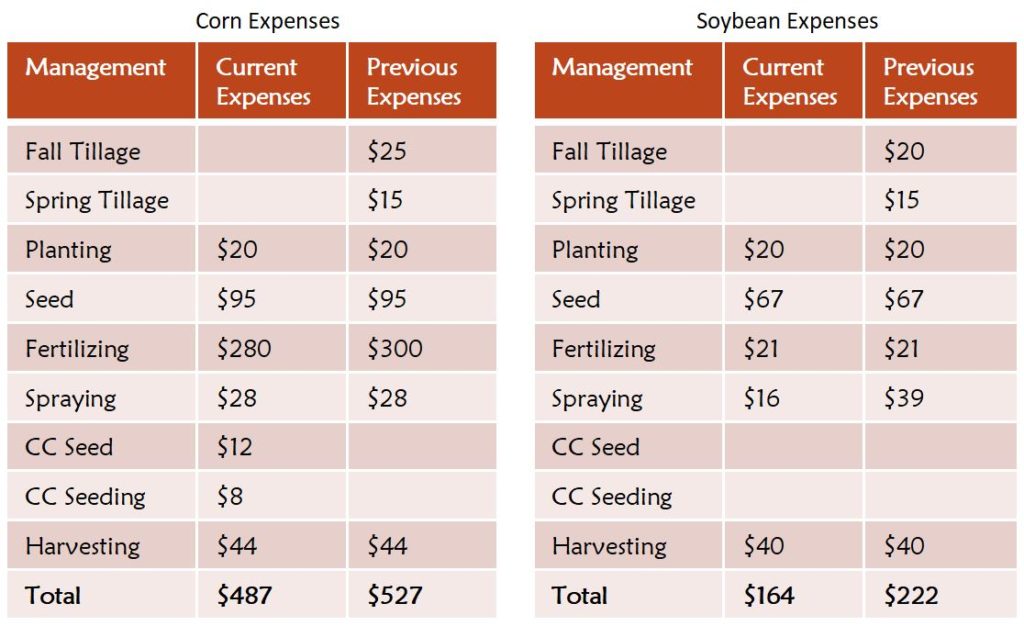We hear a lot about farmers that have implemented soil health practices and all of the benefits they get from doing so. Could it really work on your farm? Below are considerations for implementing soil health practices when we’re on the fence.
· My current management is working
· Current tight margins and adding risk
· Long term changes-changing equipment
· What will happen to my yields?
· What will happen to my input costs?
You are getting decent yields, your agronomist has a solid prescription, and you are comfortable with your current management. Adding risk in these times are hard, there may already be stress with markets and weather. Will you need to buy different equipment and how much will that cost? Your current management is working but are there areas that inputs could be reduced? How much in fertilizer are you needing to add to get your yields?

Here are the before and current breakdowns for a farmer that implements cereal rye cover crop every other year and uses no-till.
Yields are maintained or increased depending on management choices. If you have heavy, wet soils and want to do no-till, using cover crops to increase your soil aggregates and infiltration are key. Going straight to no-till from conventional tillage without covers will set up for tight, wet soils that don’t function well.
Soil structure needs to be built so water can infiltrate, plants can root, and compaction is alleviated. Compaction can’t be alleviated with tillage long term, every tillage pass creates compaction just below the depth of tillage as well as wheel tracks, this is why a system with tillage requires tillage to be done every year. As we build our soil structure with disturbing it less, adding more roots, compaction reduces without causing more compaction. Soils managed with soil health practices can have infiltration rates of 5 inches per hour or more while conventionally tilled soils are averaging around 0.5 inches per hour. This will allow the rain to infiltrate where it falls reducing runoff and erosion of topsoil and nutrients, and provide more oxygen for plant roots reducing drown out, nitrogen tie up with saturated soils, and disease issues.
Sandier soils will benefit from reduced tillage and cover crops by building organic matter reducing droughtiness, improve nutrient availability, and reduced erosion.
Cover crops also provide excellent weed control, and easy way to start is by seeding a bushel of cereal rye September through February after corn, plant your soybeans green, and terminate the cereal rye with a roller or chemical based on the conditions.
You don’t need a new planter to no-till, setting your current planter is key to saving money and making it work, check out PFI’s info on planter adjustments https://practicalfarmers.org/2018/02/eight-planter-adjustments-for-planting-into-cover-crop-residue/
Change is difficult and knowing where to start is key. Our farmer mentors are available to talk with you about options, trouble-shooting, their experiences-their successes and failures. This will help to get going in the right direction and avoid making mistakes other have, check them out at https://mnsoilhealth.org/mentor/ the most helpful tool is talking with the people doing this-farmers using these practices-to hear how they are getting it to work and being successful.
